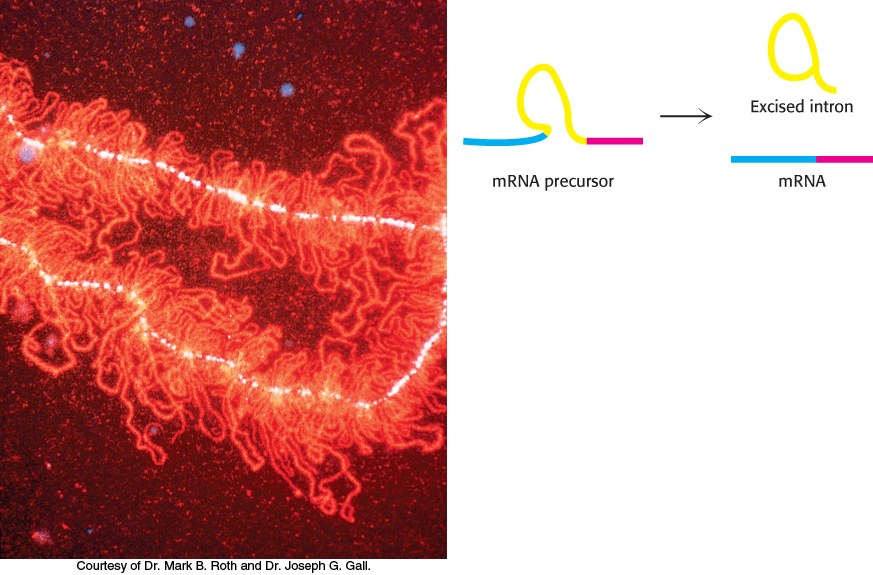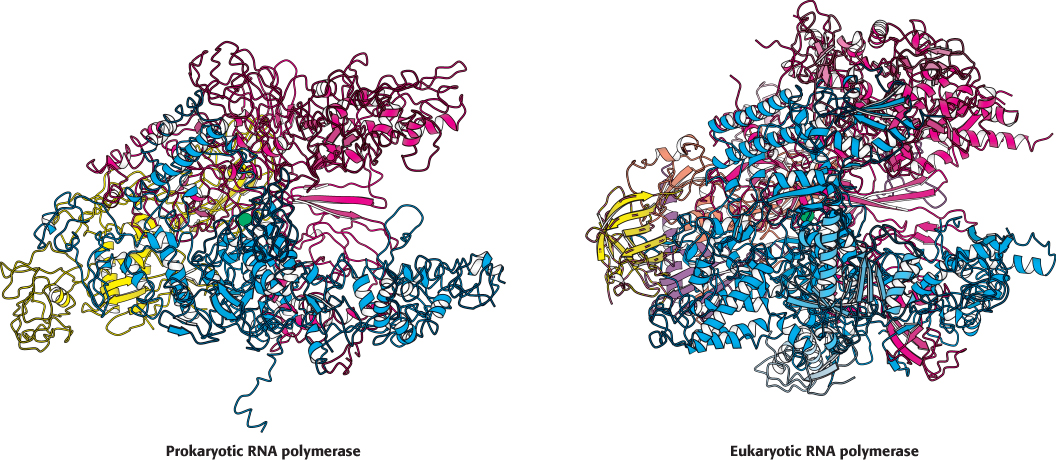RNA Synthesis and Processing
CHAPTER
29
859

DNA stores genetic information in a stable form that can be readily replicated. The expression of this genetic information requires its flow from DNA to RNA and, usually, to protein, as was introduced in Chapter 4. This chapter examines RNA synthesis, or transcription, which is the process of synthesizing an RNA transcript with the transfer of sequence information from a DNA template. We begin with a discussion of RNA polymerases, the large and complex enzymes that carry out the synthetic process. We then turn to transcription in bacteria and focus on the three stages of transcription: promoter binding and initiation, elongation of the nascent RNA transcript, and termination. We then examine transcription in eukaryotes, focusing on the distinctions between bacterial and eukaryotic transcription.
RNA transcripts in eukaryotes are extensively modified, as exemplified by the capping of the 5′ end of an mRNA precursor and the addition of a long poly(A) tail to its 3′ end. One of the most striking examples of RNA modification is the splicing of mRNA precursors, which is catalyzed by spliceosomes, protein complexes consisting of small nuclear ribonucleoprotein particles (snRNPs). Remarkably, some RNA molecules can splice themselves in the absence of protein. This landmark discovery by Thomas Cech and Sidney Altman revealed that RNA molecules can serve as catalysts, greatly influencing our view of molecular evolution.
860
RNA splicing is not merely a curiosity. Many genetic diseases have been associated with mutations that affect RNA splicing. Moreover, the same pre-
Furthermore, the investigation of different classes of RNA molecules has been one of the most productive areas of biochemical research in recent years. In the next chapter we will explore the long-
RNA synthesis comprises three stages: Initiation, elongation, and termination
RNA synthesis is catalyzed by large enzymes called RNA polymerases. The basic biochemistry of RNA synthesis is common to all organisms, commonality that has been beautifully illustrated by the three-

 FIGURE 29.1 RNA polymerase structures. The three-
FIGURE 29.1 RNA polymerase structures. The three-RNA synthesis, like all biological polymerization reactions, takes place in three stages: initiation, elongation, and termination. RNA polymerases perform multiple functions in this process:
1. They search DNA for initiation sites, also called promoter sites or simply promoters. For instance, E. coli DNA has about 2000 promoter sites in its 4.8 × 106 bp genome.
2. They unwind a short stretch of double-
861
3. They select the correct ribonucleoside triphosphate and catalyze the formation of a phosphodiester bond. This process is repeated many times as the enzyme moves along the DNA template. RNA polymerase is completely processive—
4. They detect termination signals that specify where a transcript ends.
5. They interact with activator and repressor proteins that modulate the rate of transcription initiation over a wide range. Gene expression is controlled substantially at the level of transcription, as will be discussed in detail in Chapters 31 and 32.
The chemistry of RNA synthesis is identical for all forms of RNA, including messenger RNAs, transfer RNAs, ribosomal RNAs, and small regulatory RNAs. The basic steps just outlined apply to all forms. Their synthetic processes differ mainly in regulation, posttranscriptional processing, and the specific RNA polymerase that participates.